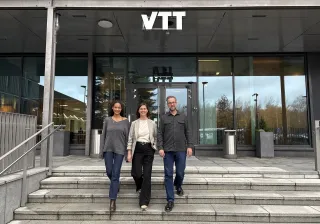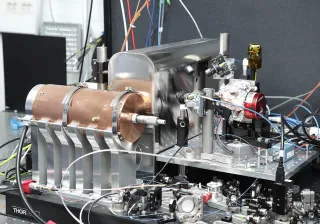Drones today are like cars in the sixties or smartphones in 2000’s: their journey is just beginning, but in 10-20 years they could be everywhere. Our society will benefit from this technology, but we must also prevent its misuse. VTT is working on this, with focus on drone detection.
Drones have been my hobby for a long time. It’s fascinating how much potential they offer for different application areas: drones can be used for flexible and cost-effective deliveries, spraying fields in agriculture, detecting heat leaks in buildings, or aerial photography for film industry – just to name a few.
In times of crisis, such as the current Covid-19 pandemic, they may become vital not just for delivering medicine but also to help with surveillance and control. The police can use drones for fast monitoring or patrolling the streets, and drones can be paired up with first responders’ cars to observe the traffic and avoid jams. In disaster zones, drones can offer back-up communication for cellular networks. We already use drones for 5G-network deployment optimisation.
Eye on public safety
Despite all the benefits drones offer, their misuse could present a threat to public safety and national security. We regulate traffic on roads and restrict the use of motor vehicles. Drones still lack this kind of general regulation, but there are restrictions and areas where drones need authorisation.
During my travels I have become aware that it can be complicated to get all the necessary permits for flying drones and many people don’t bother to do that. Some are not even aware about these regulations and may violate them unintentionally. This is a good example of a potential problem.
All this led me to think about solutions for drone safety. My research in the radio-frequency engineering offered an opportunity to take this idea further.
Is it a bird? Is it a drone?
The first step to prevent unauthorised drones is to be able to detect them. Drones are relatively small, and thus harder to detect than cars, for example. There are several methods for drone detection: visual, audio or radio detection. Our work at VTT is focused on the latter.
Radars have great possibilities for drone detection, but they also may give false alarms – a bird might be taken for a drone, for instance. In order to avoid this, we need to define what we are looking for and collect data on drone characteristics.
We used anechoic chamber to measure scattering properties of different drones. Drones are made in different shapes and sizes and using different materials, so we needed to measure various models. After measuring, we created an open-source database containing all this information.

Open data for robust drone detection
The data we have gathered in this project is accessible to anyone and it can be compared to real observations to detect a drone and define its type. At VTT, we want to develop this topic further and make some field measurements on drones flying in urban areas. The data can also be used for developing algorithms for robust drone detection. Once the unauthorised drones are distinguished, necessary action can be taken – such as disconnecting the drone from the flyer or capturing the drone with a net and carrying it away.
In addition, I am currently working on drone-to-drone and air-to-ground communications. We are planning to study radio channel properties by developing drone-based measurement system and develop antenna arrays at millimetre wave frequencies for further integration with drones. VTT is also doing research on some potential new applications, such as integrating drones with cars or using them for PPDR (public protection and disaster relief) communications.
More information
The results of our work have been published in IEEE Access, special section on Millimeter-wave and Terahertz Propagation Channel Modeling and Applications. The article and the measurement data can be accessed: https://ieeexplore.ieee.org/document/9032332.







